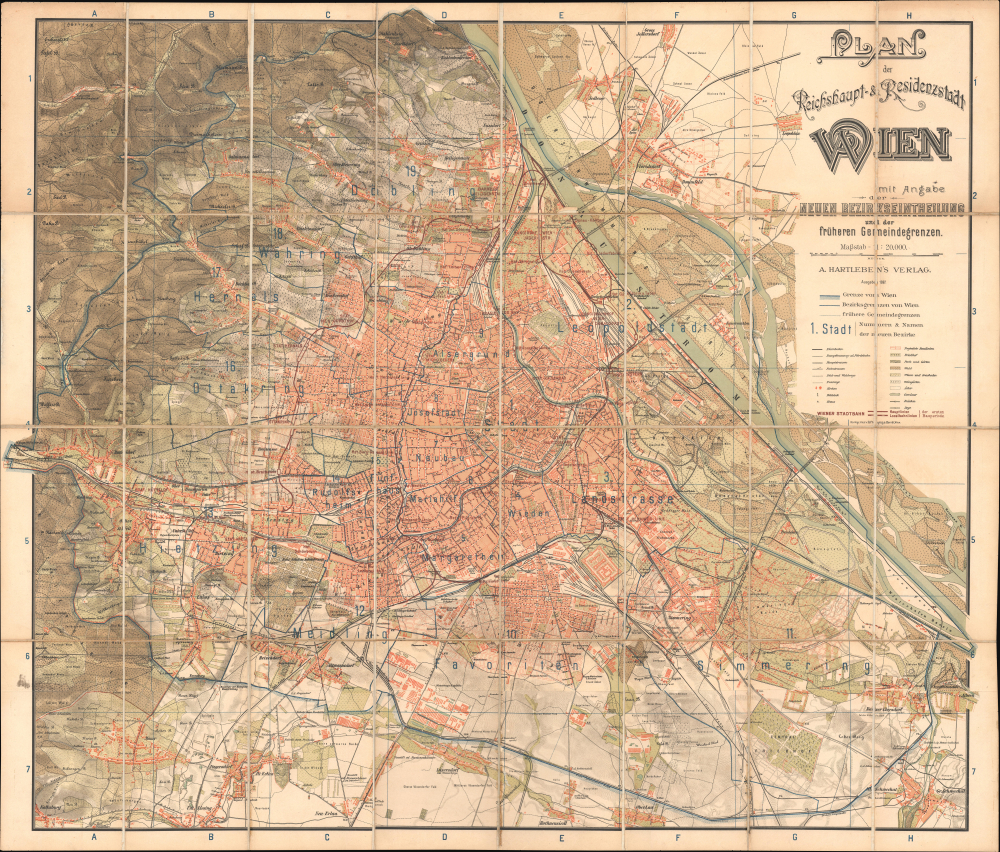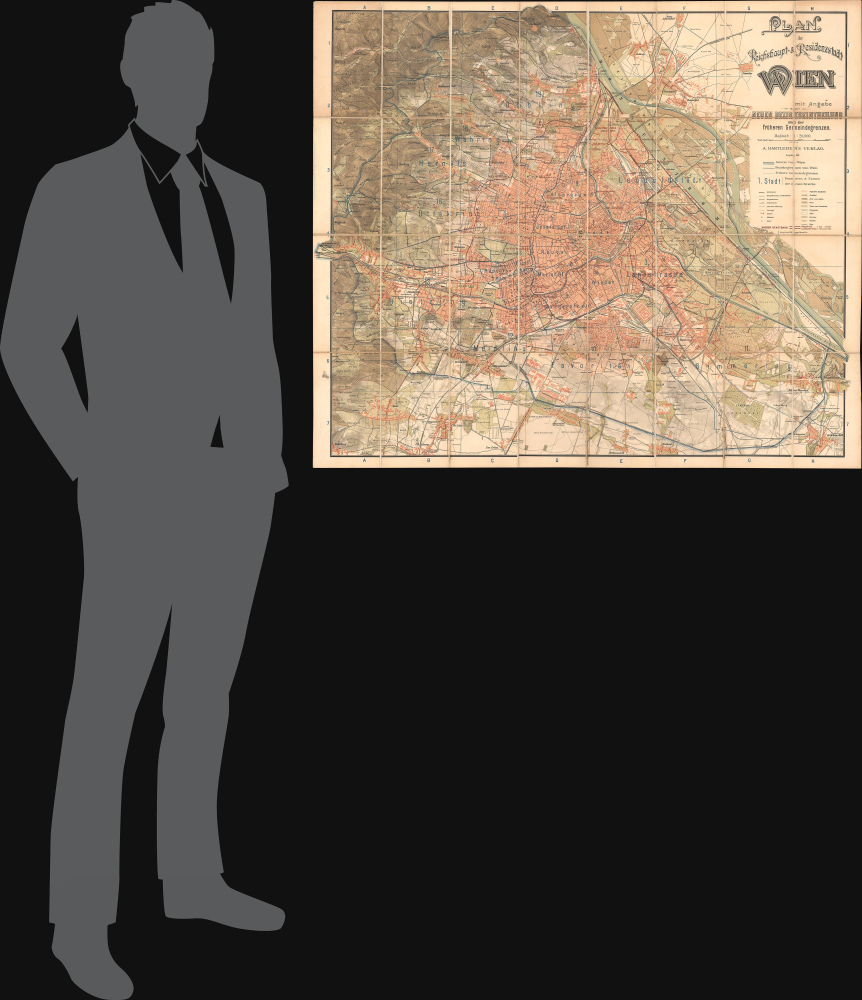Digital Image: 1897 Hartleben / Freytag Folding Map of Vienna, Austria
Wien-hartleben-1897_d
Title
1897 (dated) 39 x 33.25 in (99.06 x 84.455 cm) 1 : 20000
Description
FOR THE ORIGINAL ANTIQUE MAP, WITH HISTORICAL ANALYSIS, CLICK HERE.
Digital Map Information
Geographicus maintains an archive of high-resolution rare map scans. We scan our maps at 300 DPI or higher, with newer images being 600 DPI, (either TIFF or JPEG, depending on when the scan was done) which is most cases in suitable for enlargement and printing.
Delivery
Once you purchase our digital scan service, you will receive a download link via email - usually within seconds. Digital orders are delivered as ZIP files, an industry standard file compression protocol that any computer should be able to unpack. Some of our files are very large, and can take some time to download. Most files are saved into your computer's 'Downloads' folder. All delivery is electronic. No physical product is shipped.
Credit and Scope of Use
You can use your digial image any way you want! Our digital images are unrestricted by copyright and can be used, modified, and published freely. The textual description that accompanies the original antique map is not included in the sale of digital images and remains protected by copyright. That said, we put significant care and effort into scanning and editing these maps, and we’d appreciate a credit when possible. Should you wish to credit us, please use the following credit line:
Courtesy of Geographicus Rare Antique Maps (https://www.geographicus.com).
How Large Can I Print?
In general, at 300 DPI, you should at least be able to double the size of the actual image, more so with our 600 DPI images. So, if the original was 10 x 12 inches, you can print at 20 x 24 inches, without quality loss. If your display requirements can accommodate some loss in image quality, you can make it even larger. That being said, no quality of scan will allow you to blow up at 10 x 12 inch map to wall size without significant quality loss. For more information, it is best consult a printer or reprographics specialist.
Refunds
If the high resolution image you ordered is unavailable, we will fully refund your purchase. Otherwise, digital images scans are a service, not a tangible product, and cannot be returned or refunded once the download link is used.
Cartographer S
Freytag and Berndt (1770 - Present) is a map, atlas, guidebook, and travel literature publisher. Its roots reach back to when Francesco Artaria founded a lithographic works in Vienna in 1770. In February 1879, Gustav Freytag founded a cartographic publishing house. Freytag and Berndt merged with the cartographic division of Artaria in 1920. After World War II, Freytag-Berndt und Artaria experienced expanded publication to become one of the most important cartographic publishers in Central Europe. Today, Freytag and Berndt publishes street maps, city map, hiking maps, and cycling maps and employs fifty cartographers and editors at their headquarters in Vienna. More by this mapmaker...
Conrad Adolf Hartleben (August 26, 1778 - April 5, 1863) was a German bookshop owner and publisher who founded a company bearing his name that became one of the largest publishers in the Austro-Hungarian Empire at the turn of the 20th century. Hartleben was born in Mainz but in 1802, at the age of 24, relocated to Buda (now Budapest) where he took over a bookstore owned by Sigmund von Ivanics. Two years later, he established his own bookshop and publishing house in Pest. Hartleben displayed a skill with business and was able to expand the bookstore to Vienna and Leipzig, moving the company's headquarters to Vienna in 1844. In 1859, Hartleben co-founded the Austrian Booksellers' Association (Verein der österreichischen Buchhändler). By the time of his death, Hartleben had turned his company into one of the most prominent publishers in the German-speaking world, especially in the Austrian Empire (soon rechristened the Austro-Hungarian Empire). After Conrad Hartleben's death, his great nephew Adolf Hartleben (1835 - 1903) took over the company. The Pest and Vienna branches of the company split, the former focusing on bookselling and the latter on publishing. By 1869, Adolf Hartleben handed management of the company over to a trusted employee, the capable Eugen Marx (1844 - 1934). The bookselling business in Pest was sold off in pieces to rivals or employees and the parent company turned its focus to publishing. Marx imported state-of-the-art printing presses, the most advanced available in Vienna at the time, allowing the company to become a fixture of the publishing scene of the late 19th century German-speaking world, publishing the earliest German translation of Jules Verne's 20,000 Leagues under the Sea (20.000 Meilen unter dem Meer). The company was badly hurt by the First World War, during which Marx passed management to his son Richard Marx, who oversaw it until 1947, by which time the Second World War had caused even more damage. In the postwar period, the company was reborn under the leadership of Walter Rob (with the company renamed A. Hartleben, Inhaber Dr. Rob) but never regained its earlier prominence. In 2007, the company was sold but its name remains in its successor, HERA A. Hartleben GmbH, based in Vienna. Learn More...




